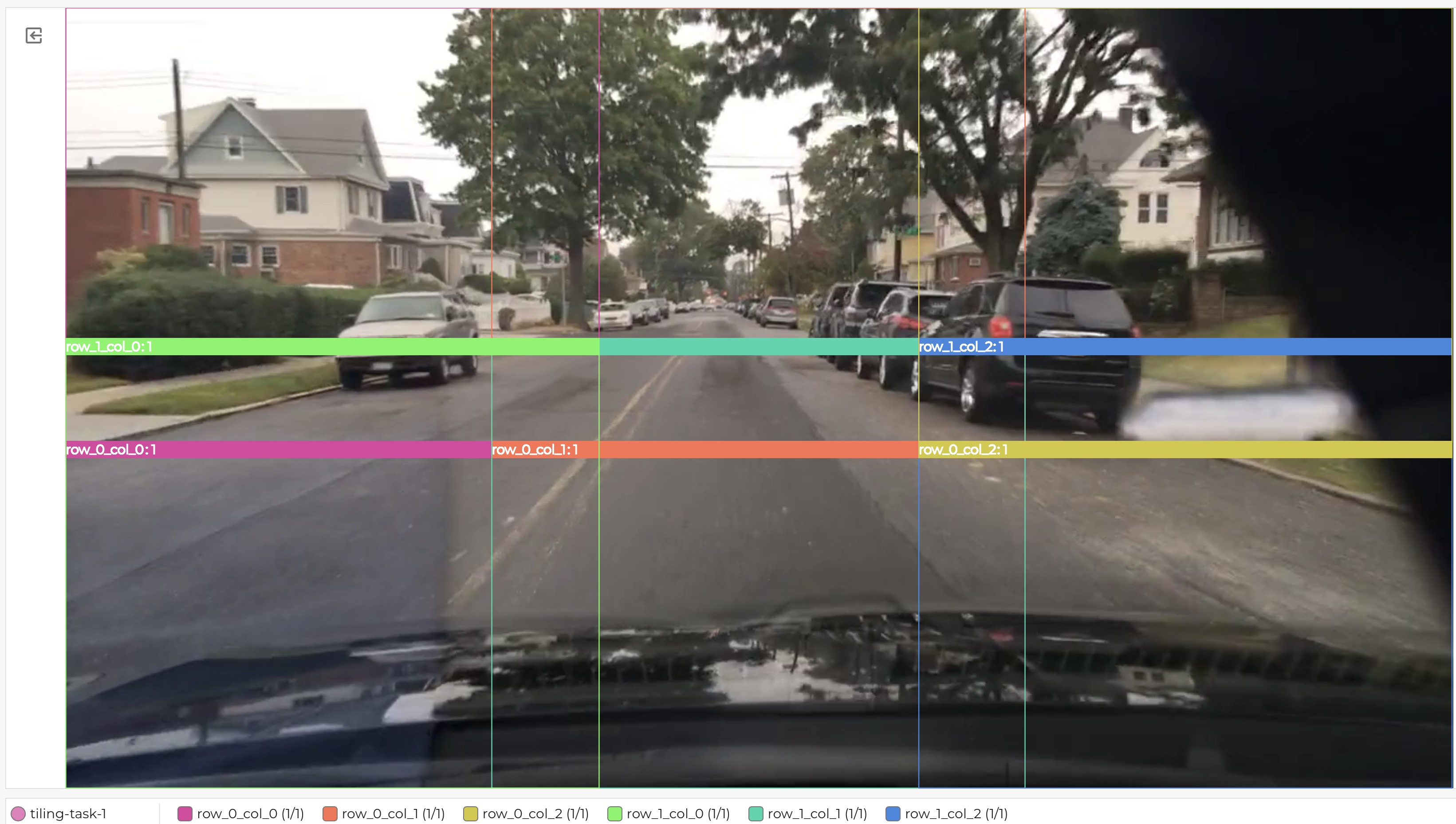Auto Tasks
Auto tasks generate predictions for each image and thus allow using features like object-diversity , object-typicality and Crop Datasets. They generate fixed predictions and thus don't require running prediction models and providing files.
Tiling Auto Tasks
Tiling auto tasks generate tiles out of each image. They split each image into rectangular tiles in a grid, optionally with overlap. This is especially useful for images which make sense at variable scales, e.g. satellite, drone or agricultural images.
Tiling auto tasks are specified when scheduling runs as part of the selection config. The following example shows how to have a 3x2 grid of tiles with an overlap of 20% and diversify across the tiles.
selection_config = {
"n_samples": 10,
"strategies": [
{
"input": {"type": "EMBEDDINGS", "task": "tiling-task-1"},
"strategy": {"type": "DIVERSITY"},
}
],
"auto_tasks": [
{
"type": "TILING",
"name": "tiling-task-1", # type: str. Must be unique to all other tasks.
"num_rows": 3, # type: int
"num_cols": 2, # type: int
"overlap": 0.2, # type: float. Optional, default is 0.0. Must be in [0.0, 1.0].
},
],
}Tiling tasks are treated like regular predictions in the LightlyOne Platform. They are overlayed on the images and they allow jumping to the crops of each tile. There is one crop dataset for each tiling task.

Visualisation of tiling task predictions in the LightlyOne Platform
The tiling auto tasks can be used alongside regular Prediction Tasks in a LightlyOne worker run. The tiling tasks don't have any meaningful categories or prediction probability vectors, thus they can only be used as part of an object EMBEDDINGS input. Using them with an input of type SCORES or PREDICTIONS is not possible.
Updated 10 months ago
